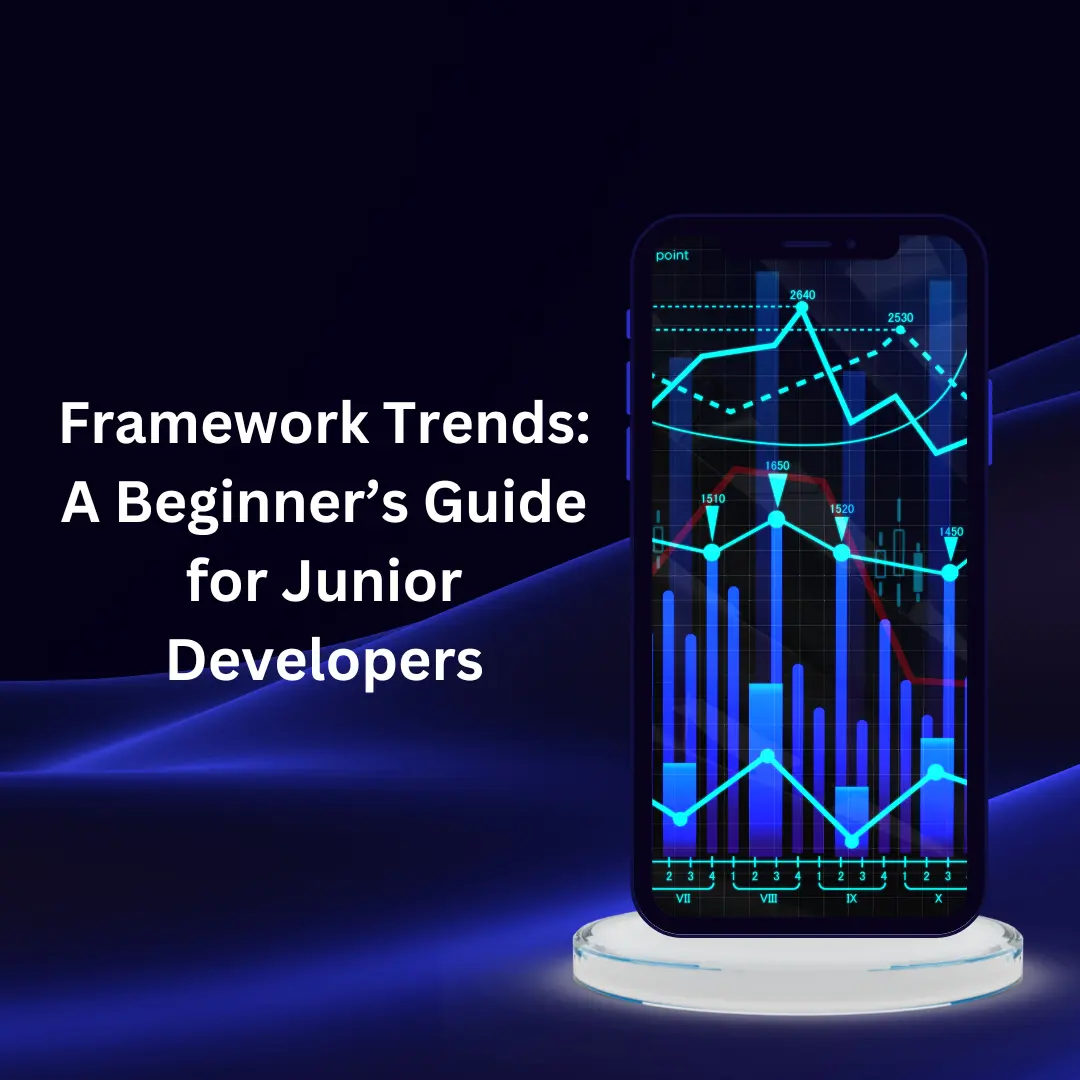Introduction
Framework trends are shaping how websites, apps, and digital tools are built. If you’re a junior developer, staying on top of these trends can make the difference between landing your first project and falling behind. The tech landscape changes quickly—new tools appear, old ones fade, and best practices evolve.
In this article, you’ll learn why framework trends matter, which tools are worth exploring, how to choose the right one for your needs, and practical tips to avoid common mistakes.

Why it Matters
Frameworks save time. Instead of coding everything from scratch, you can use pre-built structures to speed up development. But trends in frameworks shift. Today’s favorite may become tomorrow’s legacy code.
A 2024 Stack Overflow survey reported that over 80% of professional developers use at least one framework daily (source). That means knowing which frameworks are in demand gives you better career opportunities.
For junior developers, the challenge is clear: learn what’s popular, understand why, and pick tools that match both your goals and the job market.
Top Options / Tools
Here are five frameworks that are shaping current framework trends.

1. React
A JavaScript library often called a framework because of its ecosystem.
- Pros: Huge community, reusable components, strong job demand.
- Cons: Learning curve for state management, constant updates.
- Best for: Building modern, interactive web apps.
2. Angular
A full-fledged framework by Google.
- Pros: Built-in tools, TypeScript support, strong structure.
- Cons: Steeper learning curve, heavier compared to others.
- Best for: Enterprise-level apps with complex requirements.
3. Vue.js
A lightweight, flexible framework.
- Pros: Easy to learn, great documentation, smooth integration.
- Cons: Smaller job market compared to React.
- Best for: Startups or smaller projects needing quick development.
4. Next.js
A React-based framework focused on server-side rendering.
- Pros: SEO-friendly, great developer experience, strong ecosystem.
- Cons: Requires React knowledge, can feel complex at first.
- Best for: Apps needing fast load times and strong SEO.
5. Django
A Python web framework.
- Pros: Batteries included, strong security, widely used in backend development.
- Cons: Less flexibility than lighter frameworks.
- Best for: Data-heavy applications or projects needing quick backend setup.

How to Choose the Best Option
Choosing a framework doesn’t have to be overwhelming. Here’s a simple 5-step checklist:
- Define your project goals.
Do you need speed, scalability, or SEO? - Check the job market.
Look at developer job boards in your region. Which frameworks are most in demand? - Match with your language skills.
If you know Python, Django makes sense. If you’re into JavaScript, React or Vue works better. - Evaluate community support.
Bigger communities mean faster answers to your questions. - Test with a small project.
Build a simple to-do app with your chosen framework. You’ll quickly see if it feels right.
Tips & Best Practices
Learning frameworks takes time. Here are some practical tips:
Do’s
- Do start small. Create a personal project before applying frameworks to client work.
- Do follow documentation. Official docs are usually the most reliable resource.
- Do join communities. Forums, Discord groups, and GitHub issues can save hours.
Don’ts
- Don’t chase every new trend. Master one framework first.
- Don’t skip fundamentals. Strong JavaScript or Python skills matter more than framework shortcuts.
- Don’t ignore updates. Frameworks evolve; keep your skills current.
Sample Case
Imagine you’re a junior developer hired to build a small e-commerce site. You pick React because it’s popular. But SEO is important for the client. If you had checked framework trends, you might have chosen Next.js instead, which offers server-side rendering for better SEO. A simple awareness of trends avoids costly mistakes.
Conclusion
Here are the three key takeaways:
- Framework trends guide the tools companies are hiring for.
- React, Angular, Vue, Next.js, and Django are among today’s most relevant options.
- Choose frameworks based on your goals, language strengths, and project needs.
Next step: Pick one framework and build a small project this week. Practice is the fastest way to learn.

FAQ
What are framework trends in web development?
Framework trends refer to the changing popularity and usage of tools developers use to build web and mobile applications.
Why should junior developers follow framework trends?
Following framework trends helps junior developers learn tools that are in demand, making them more employable.
Which frameworks are currently popular?
React, Angular, Vue.js, Next.js, and Django are among the top frameworks driving current framework trends.
How do I know if a framework trend is worth learning?
Check job boards, community size, and documentation quality before committing to a framework.
Can I build a career focusing on one framework?
Yes. Many developers specialize in a single framework like React or Django and build long-term careers around it.

Software Testing: A Beginner’s Guide for Developers
Introduction Software testing is the process of checking if your code works as expected before releasing it to users. For…

Nano Banana: Gemini 2.5 Flash Image for Business Owners
Introduction If you’ve been following AI news, you may have heard the term nano banana. It’s not a fruit—it’s shorthand…

Work From Home Tips: A Practical Guide for Professionals
Introduction Working remotely sounds simple—just open your laptop and start. But in practice, it can be challenging. Distractions, lack of…

Top 10 Productivity Tips That Are Free for Students and Professionals
Introduction Boosting productivity doesn’t have to cost money. Whether you’re a student facing exams or a professional trying to manage…

How to Speak English Easily Step by Step
Introduction Learning English is easier when you follow a structured path. Many learners ask how to speak English easily step…

Framework Trends: A Beginner’s Guide for Junior Developers
Introduction Framework trends are shaping how websites, apps, and digital tools are built. If you’re a junior developer, staying on…